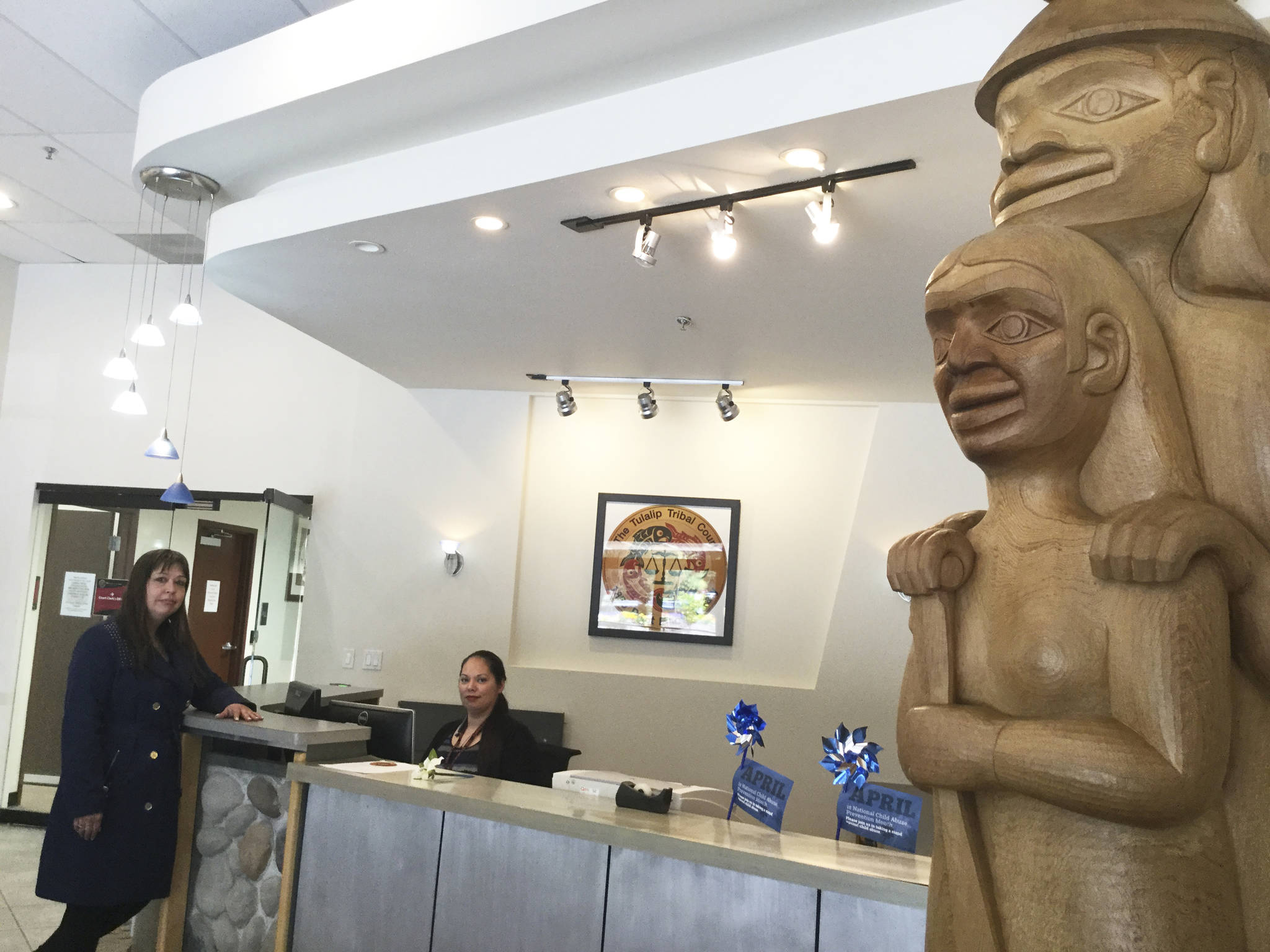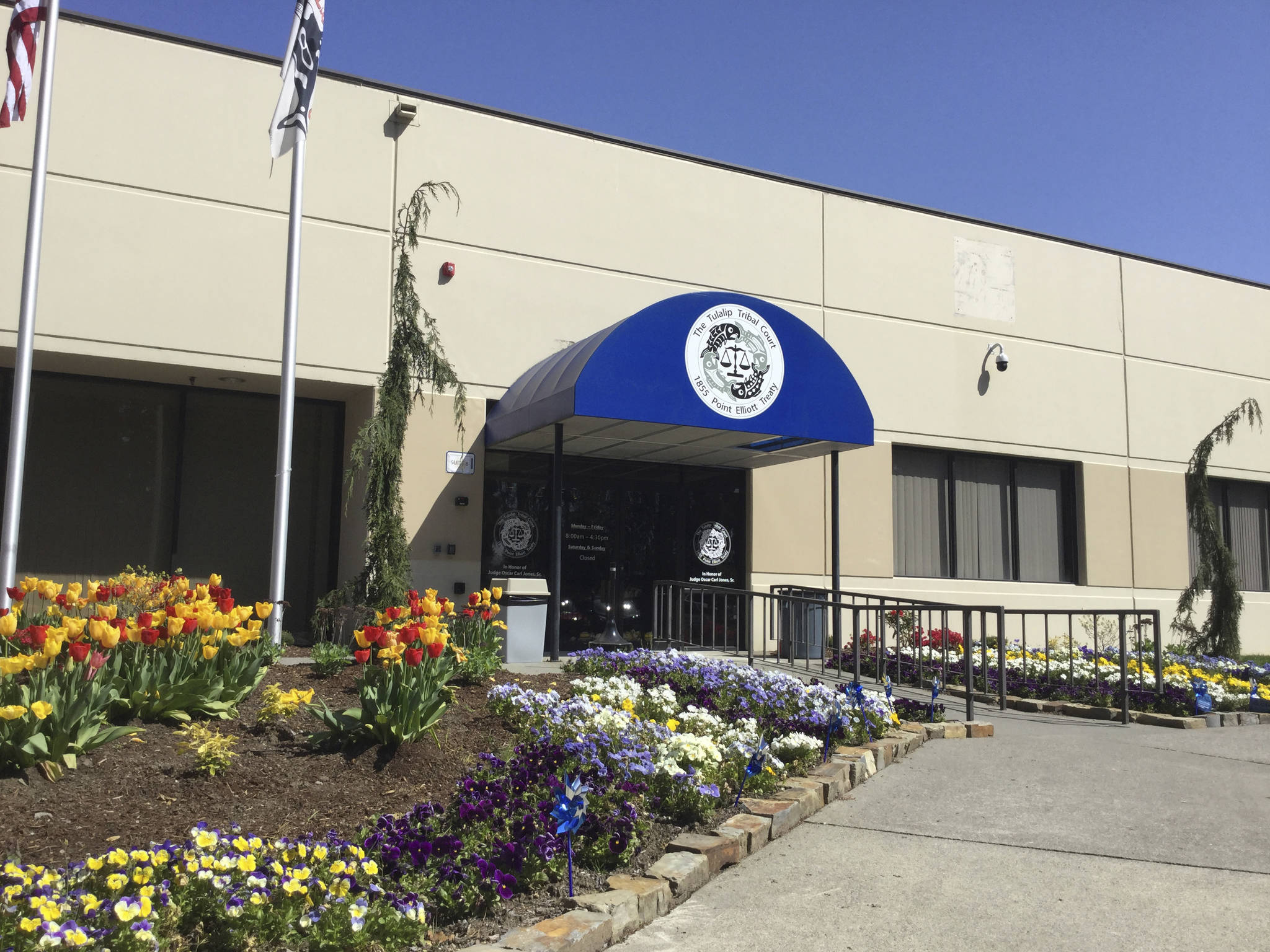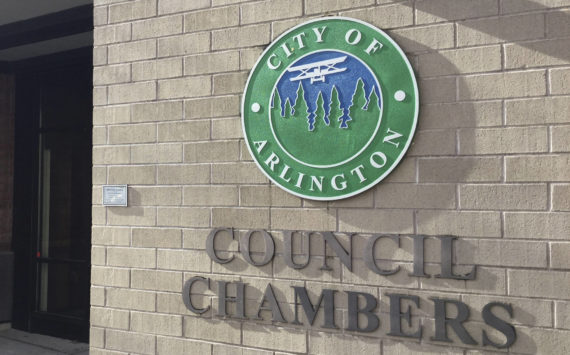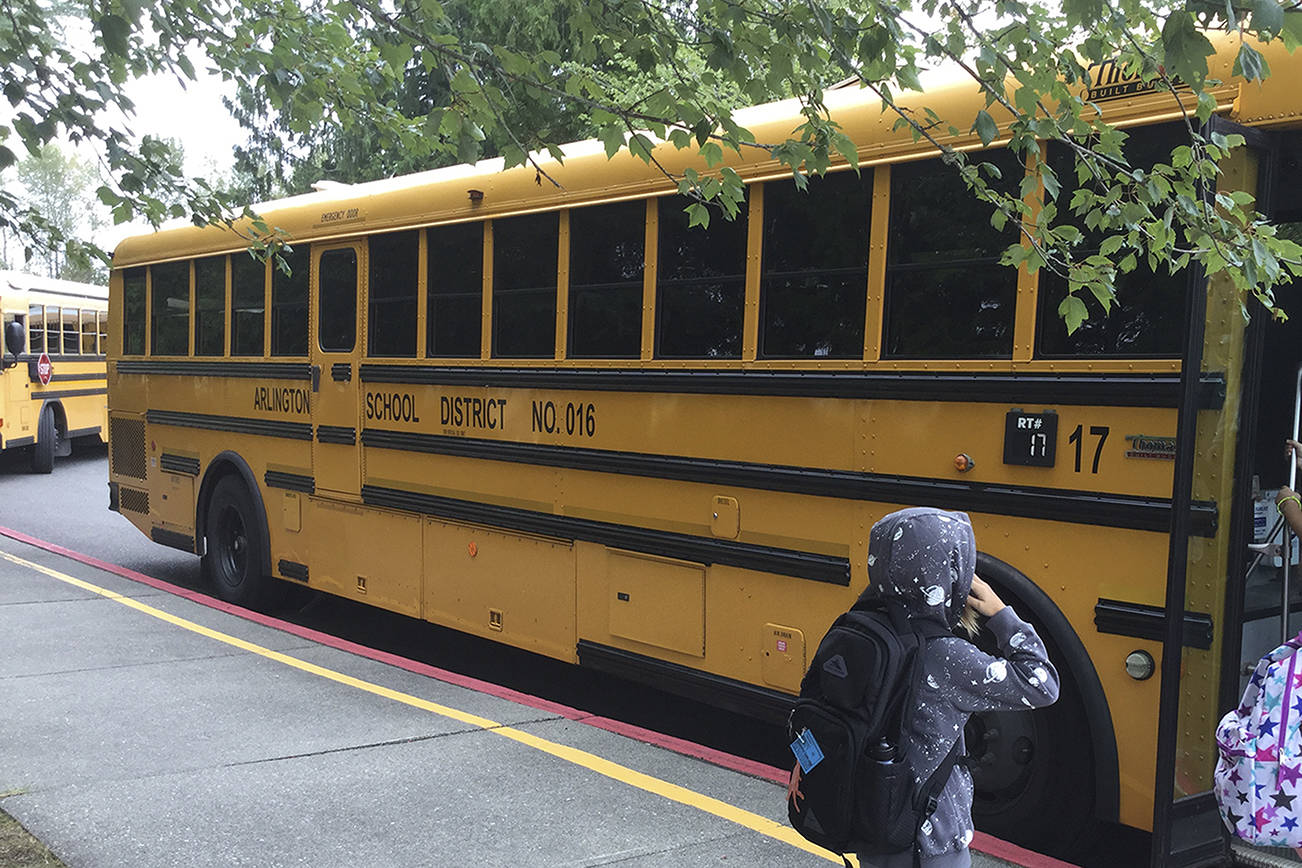TULALIP – Tribal Court director Wendy Church still remembers the tight quarters in the old modulars that served as a law and justice hub since 2003 just off Marine Drive near I-5.
She recalled an iconic shed in back that held archived records, secure, but a headache for clerks to go back and forth to retrieve and organize files in the cold or heat.
File that in the history archives because six months since the Law & Justice Center relocated to its new location across the street into the former Hewlett-Packard Building, tribal court and police officials are settling in.
The 70,602-square-foot center at 6332 31st Ave. NE opened in December after a $2.5 million renovation. The move more than doubled their space, with 30,300 allocated for courts, 20,300 for police and 20,000 for gaming offices.
“This building is much more dignified, spacious and more secure,” Church said.
The main entrance includes colorful flower beds, rockeries and a small seating plaza. Inside, the lobby features a totem wood carving, decorative light, display cases, a framed Point Elliott Treaty carving, and a main door leading into the three courtrooms and administrative offices.
“I think the building and features give clients a more welcome feeling, and hopefully it gives attorneys and the public alike a new level of respect for this court,” Church said.
She said the new center has hosted many tribalstate and federal dignitaries. “I’ve heard it said many times now that we have one of the best, most robust tribal court systems in the nation.”
Employment includes 52 in the police department, and 31 court employees, including five judges.
Church said the building also houses the Healing to Wellness Court Program, Prosecutors Office, UW Public Defense Clinic, Pre-Trial Services, probation, office of Civil Legal Aid, Elder’s Panel, Northwest Justice Project Native American Unit and other services.
Church said reestablishing the wellness court has been exciting to see. Administrator Hilary Sotomish has done a great job pulling that team together, she said.
The tribal court has grown significantly since 2001 when the Tulalip took back jurisdiction over reservation lands from the state. Retrocession enabled the tribes to establish its own police department, and advance sovereignty and self-determination. Having its own police force meant that tribal court services needed to increase to meet demand.
Prior to retrocession, the court heard employment cases, housing, evictions and child welfare cases. After retrocession, their caseload went from 100 to around 1,000 cases, “so there were some growing pains,” Church said.
“Retrocession greatly improved public safety on the reservation,” said Church, who completed a research project for her master’s degree in Public Administration from The Evergreen State College in Olympia. “As a resident here, I saw really profound changes after we assumed criminal jurisdiction. Prior to that there were a lot of public safety issues.”
The tribal board approved the relocation for a few reasons. Mainly, the board recognized that it was long overdue, said Church, who praised their forward-thinking.
Another reason was to make way for the new $100 million, 110,000-square-foot replacement Quil Ceda Creek Casino now under construction at 6410 33rd Ave. NE where the old court and police deparatment were located.
Associate Judge Remy Stephanson Leonard said she likes the new spot. “It’s so spacious and was hard to get used to at first because our other digs were so cozy,” Leonard said.
She knows what other others thought about the old building. “It doesn’t really matter to me where court is conducted, but I have to say it’s nice to have a big building that can accommodate everybody and gives space to grow, too.”
Leonard said the larger facility is better for health and fitnes. She’s seen her daily steps increase from 3,000 to 10,000 a day. “That’s a big deal when you’re a judge, because we sit a lot,” she said.
Since the relocation, Church said security is her No. 1 goal. The building incorporates video surveillance cameras, badge access, security locks, thermal imaging for the judges when they enter and leave the building, and a metal detector will be arriving soon.
Church is also applying for a $1 million DOJ court renovation grant to move Courtroom 1 – the criminal court – so it’s joined to an in-custody holding room inside the court. She is also working getting ballistic window tint around the building, and court staff have had two active shooter trainings since moving in.
Court financial coordinator Annie Moses, who has worked in the court for more than 20 years, is impressed with the new digs.
“We were squished in the other building,” said Moses, who processes bail and restitution files, balances the books, and who was ecstatic to learn that more filing cabinets had just arrived.








